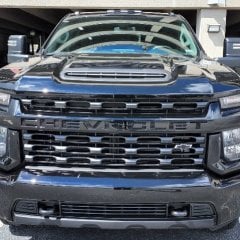- 0
Stumble at first cold start - dealer can't find anything wrong
-
Recently Browsing 0 members
- No registered users viewing this page.
-
Forum Statistics
246k
Total Topics2.6m
Total Posts -
Member Statistics
-
Who's Online 26 Members, 2 Anonymous, 1,798 Guests (See full list)















Question
Mossyoakglock
For the last two days I have had the same problem at the first start in the morning and it's getting old.
Normally, when I start the truck in the morning after sitting overnight it will crank no problem and idle around 1,000 - 1,200 RPM and then slowly drop. The last two morning it will crank and start with no problem at all and jump right to 1,000 RPM but then instantly drop to around 400 RPM for about 2 seconds, idle rough, and then idle right back up to 1,000 and then everything is normal. It idles down smoothly like it is supposed to do. It's done this the past two mornings and will sometimes do it once every two weeks or so at random, sometimes 2-3 times a week. Again, at random. It hasn't done it in a while but just started it again this week.
Once the truck starts it runs fine. Good acceleration, etc. Although one day I was on a back road and decided to get on it a little bit and it just didn't go anywhere. Bogged down really bad and then about 2-3 seconds later it took off. After that it was fine.
Until I am able to check the fuel pressure this weekend, any thoughts on what it could be? Throttle body and MAF are clean and I just ran a bottle of Techron through it about 500 miles ago. Truck has about 91,000 miles.
My first thought is that it could be the fuel pump starting to go bad. Thoughts? I had left it with the dealer a few months back when it was doing it but they of course couldn't find anything wrong.
Link to comment
Share on other sites
24 answers to this question
Recommended Posts
Archived
This topic is now archived and is closed to further replies.